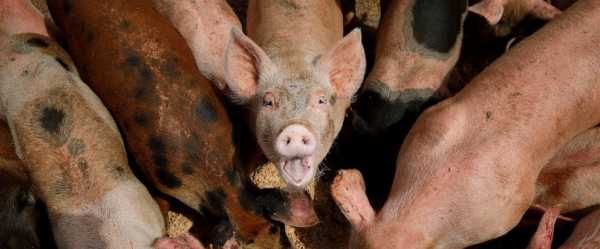
TRAVERSE CITY, Mich. — The U.S. Environmental Protection Agency says it will study whether to toughen regulation of large livestock farms that release manure and other pollutants into waterways.
EPA has not revised its rules dealing with the nation's largest animal operations — which hold thousands of hogs, chickens and cattle — since 2008. The agency said in 2021 it planned no changes but announced Friday it had reconsidered in response to an environmental group's lawsuit.
While not committing to stronger requirements, EPA acknowledged needing more recent data about the extent of the problem — and affordable methods to limit it.
“EPA has decided to gather additional information and conduct a detailed study on these issues in order to be able to make an informed decision as to whether to undertake rulemaking,” the agency said.
Food & Water Watch, whose lawsuit prompted the agency's reversal, said a new approach was long overdue.
“For decades EPA’s lax rules have allowed for devastating and widespread public health and environmental impacts on vulnerable communities across the country,” Tarah Heinzen, the group's legal director, said Monday.
Beef, poultry and pork have become more affordable staples in the American diet thanks to industry consolidation and the rise of giant farms. Yet federal and state environmental agencies often lack basic information such as where they’re located, how many animals they’re raising and how they deal with manure.
Runoff of waste and fertilizers from the operations — and from croplands where manure is spread — fouls streams, rivers and lakes. It's a leading cause of algae blooms that create hazards in many waterways and dead zones in the Gulf of Mexico and Lake Erie.
Under the Clean Water Act, EPA regulates large farms — known as Concentrated Animal Feeding Operations, or CAFOs — covered by federal pollution permits. Federal law requires only those known to discharge waste to obtain permits, although some states make others do so.
EPA's most recent tally shows 6,266 of the nation's 21,237 CAFOs have permits.
In its plan, the agency said its rules impose “substantial and detailed requirements” on production areas — barns and feedlots where animals are held, plus manure storage facilities — as well as land where manure and wastewater are spread.
While prohibiting releases to waterways, the rules make exceptions for production area discharges caused by severe rainfall and for stormwater-related runoff from croplands where waste was applied in keeping with plans that manage factors such as timing and amounts.
In deciding whether to revise the rules, EPA said it would consider how well they're controlling pollution and how changing them would bring improvements.
The agency conceded its data on discharges to waterways is “sparse,” with a preliminary analysis based on reports from only 16 CAFOs. In addition to seeking information from more farms, EPA said it would assess whether discharges are widespread nationally or concentrated in particular states or regions.
It also will look into practices and technologies developed since the rules were last revised, their potential effectiveness at preventing releases, and their cost to farm owners and operators. Under the law, new requirements on farms must be “technologically available and economically achievable.”
Revising water pollution rules typically takes several years, three full-time employees and $1 million per year for contractor help, EPA said. The study will determine whether “the potential environmental benefits of undertaking rulemaking justify devoting the significant resources that are required," it said.
Livestock groups have said government regulation is strong enough and that voluntary measures such as planting off-season cover crops and buffer strips between croplands and waterways are the best way to curb runoff. The American Farm Bureau Federation declined comment Monday.
Environmental groups argue regulations should cover more farms, require better construction of manure lagoons to avoid leaks, and outlaw practices such as spreading waste on frozen ground, where it often washes away during rainstorms or thaws.
“We're not talking about really expensive fixes here," said Emily Miller, staff attorney with Food & Water Watch. “We need the standards to be stronger so they actually prevent discharges as they're supposed to do.”
___
Follow John Flesher on Twitter: @JohnFlesher
___
Associated Press climate and environmental coverage receives support from several private foundations. See more about AP’s climate initiative here. The AP is solely responsible for all content.
Sourse: abcnews.go.com






